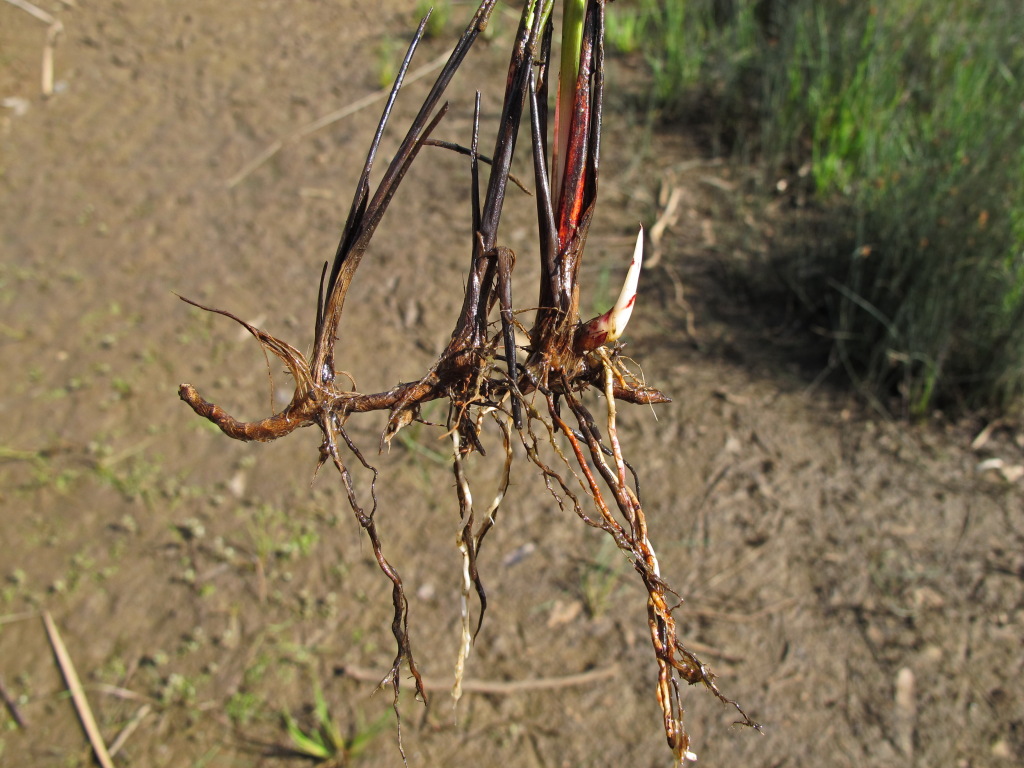Chorizandra
Rhizomatous perennials. Culms glabrous, terete, transversely septate, internally longitudinally unitubular to peritubular, hollow between septa. Leaves basal, occasionally all reduced to sheaths; blade (when present) terete, transversely septate, internally longitudinally unitubular or pluritubular. Inflorescence head-like, compact, pseudolateral, with numerous pseudospikelets on a solid core; lowest involucral bract appearing continuous with culm, terete, much exceeding inflorescence. Each pseudospikelet composed of a few sterile glumes plus few to numerous glumes each subtending 1 stamen, plus 1 uppermost female flower. Glumes spirally arranged, thin-textured, becoming narrower and simpler in shape from base to apex of pseudospikelet. Style 2–4(–5)-fid. Nut woody, obovoid to globose, longitudinally ridged.
6 species, in southern Australia (5 species in Australia) and New Caledonia, usually growing in swampy places.
The inflorescence structure in this genus (and subfamily Mapanioideae in general) is complex and not fully understood. The floral units are called pseudospikelets since they may not be homologous with spikelets in the other subfamilies. All floral scales in the pseudospikelet are here called glumes.
Wilson, K.L. (1994). Cyperaceae. In: Walsh, N.G.; Entwisle, T.J., Flora of Victoria Vol. 2, Ferns and Allied Plants, Conifers and Monocotyledons, pp. 238–356. Inkata Press, Melbourne.
 Spinning
Spinning

